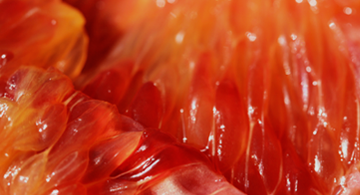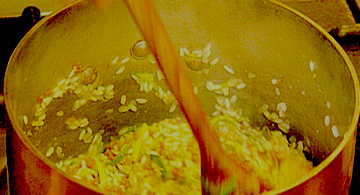Anyone who loves making Italian Ragù has a favorite pot holding fond memories of many wonderful meals. It is a pleasure to cook with it. The pot should be heavy and deep with a thick bottom being ideal for braising, and for making broths, soups, and stews because it maintains even low temperature during simmering. An enamelled cast-iron Dutch oven or cocotte, a small stockpot, deep saucepan, or brasier are fine for cooking ragù. Choose a pot that makes you smile and feel good when cooking with it. This comfort transfers to cooking ragù as it gently simmers, giving it soul.
Making Ragù is Easy Cooking
Pot Sizes: For recipes making 4 to 6 servings in this ragù section, a deep pot that is 8-inches (or 20-cm) or 10-inches (or 24-cm) wide provides enough width and depth for ragù ingredients to be at least 2-inches (or 5-cm) deep so rich flavors develop during cooking. If doubling the recipe, a deep pot 12-inches (or 30-cm) wide should give ample space.
Composition – Metal: Enamelled cast-iron is always reliable because it conducts heat superbly well, as does tin-lined copper. Stainless steel with a copper core is a good alternative. Non-stick cookware used to be flimsy but today you can choose from marvelous cookware lines including non-stick coated cast iron; PTFE-free or triple layer PFOA-free non-stick hard-anodized heavy gauge aluminum; and eco-friendly ceramic non-stick hard-anodized aluminum. All you will need for cooking ragù is one pot.
*Apply the above written guidelines for the type and size of pot needed for recipes written in this website section unless specified in a particular recipe, such as recommending a terracotta or earthenware pot for cooking.
Composition – Terracotta: Ancient Roman cooks used a simple earthenware casserole, called la cumana, for cooking many dishes over an open fire. Centuries later, earthenware or terracotta pots remain very popular in Italy for imparting a delicate texture to ragù. Bean Pots with their round bulbous bottoms and knob handles are common. Available in many stores throughout Italy, these pots are available in several countries. A deep, thick Spanish cazuela, cocote, or olla makes a good substitute as well as other Mediterranean non-lead glazed clay pots.
Cooking with Terracotta: Since ingredients are sautéed first on the cooktop, place the terracotta pot on a flame-tamer or diffuser to protect it from direct heat so it does not crack. Terracotta easily sears but does not caramelize well, so do not expect crispy browned edges on ingredients. Continue simmering on the cooktop or put into a pre-heated oven. Cooking in terracotta is gentle so ingredients remain soft, moist, and tender.







